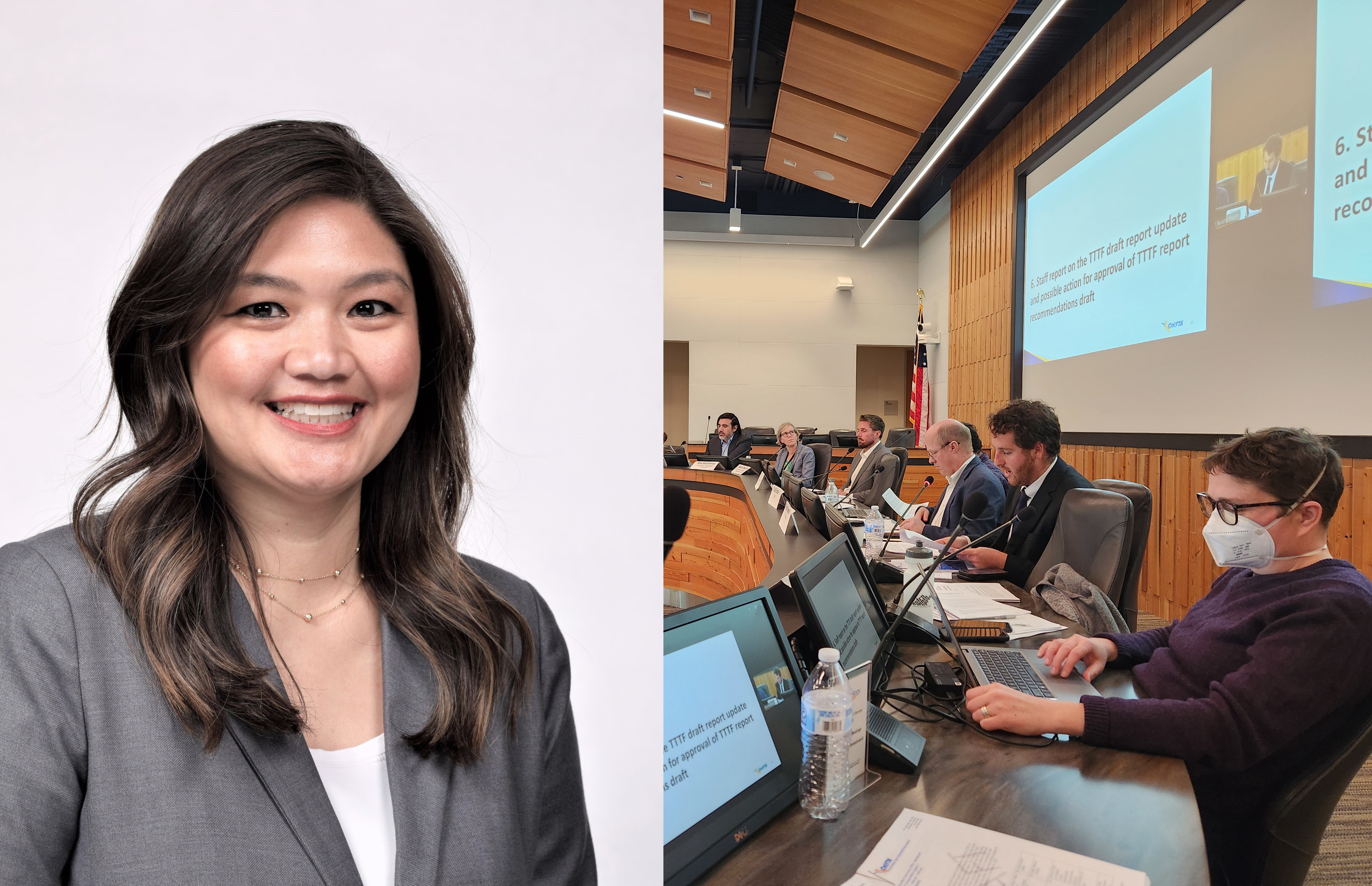
Left: Lorelle Moe-Luna, multimodal services director at the Riverside County Transportation Commission (RCTC) and member of the SB 125 Transit Transformation Task Force; right: Members of the task force meet in San Francisco on Friday, April 25.
This month, we caught up with Lorelle Moe-Luna, multimodal services director for the Riverside County Transportation Commission (RCTC), to learn more about her work with California’s Transit Transformation Task Force. This ambitious group of engaged transportation professionals from across the state was established by 2023’s California State Senate Bill 125 (SB 125), which also designated $5.1 billion in funding to support transit operations and capital improvements.
The Transit Transformation Task Force is overseen by the California State Transportation Agency (CalSTA) and works to develop policy recommendations aimed at increasing transit ridership, enhancing the rider experience and addressing long-term operational challenges. We asked Lorelle five questions about her experience as a member of the committee and how they are creating positive change for public transit agencies of all sizes, statewide, through their advocacy.
Responses have been lightly edited for clarity and brevity.
- What exactly is the Transit Transformation Task Force, and what are the group’s primary responsibilities?
The Transit Transformation Task Force was established under SB 125, which produced the Transit Innovation Rail Capital Program and the Zero Emission Transit Capital Program. The bill also distributed over $5 billion to various regional transportation planning agencies, like RCTC, to provide not only to the transit operators within their counties, but also for other eligible zero-emission and transformational tech projects.
Part of the legislation requires that CalSTA lead and develop this task force. We’re trying to define what transformative transit will look like in California and tackle the main challenges for our transit operators. We’re also establishing what we need to do to meet the state’s greenhouse gas emission and climate action goals — and how much it’s ultimately going to cost.
On the policy side, the task force is looking at strategies and recommendations that can be presented to the legislature. We are also looking at ways to streamline programs and processes to help transit agencies better prepare for major capital investments and procurements.
- California is a large state with many transportation agencies—who makes up the membership of the task force?
The task force is made up of 25 members who applied to be a part of this committee. It’s officially chaired by the California Secretary of Transportation, Toks Omishakin. The committee is also very diverse, which was part of the intention — they wanted small agencies, large agencies and [metropolitan planning organizations] of various sizes all to have representation. The committee also includes advocates who represent different nonprofit organizations and community groups.
We have a handful of members, like myself, representing Southern California. Metro is represented, as are the Southern California Association of Governments, the San Diego Metropolitan Transit System (MTS) and Move LA. We also have some folks who represent academic fields, such as the UCLA Institute of Transportation Studies.
- A diverse committee comes with diverse challenges. What issues of interest to Metrolink have been front and center, and what is your approach to addressing them?
For RCTC, a member agency of Metrolink, we're familiar with the challenges that Metrolink faces, and they're very similar to what others are facing as well. The funding issue has really been at the forefront lately for the committee because we have to find a way to make sure all of the transit agencies throughout the state are going to be financially sustainable. That’s both in terms of future growth, so that we can meet our zero-emission goals, and even to meet current-level services because of rising capital and project delivery costs.
- What are some of the recommendations with the potential to benefit Metrolink that have been discussed?
Any new potential funding sources would definitely benefit Metrolink. The committee is also looking at recommendations and strategies that really transform transit, whether it is corridor-focused or to strengthen first- and last-mile connections. We know that regional and commuter ridership is interconnected and enhancements to make travel more convenient for customers like timed schedules and easier-to-use fare payment applications reinforce the full transportation network.
We’ve talked about the customer experience. I think, actually, that Metrolink is at the forefront of this because Metrolink has taken on the initiative to transform itself and not be just a commuter rail agency anymore. The travel demands and the peaks and the demographics have been changing since COVID, so I think this regional rail identity is going to serve Metrolink well because you've already started to make that transition.
We’re looking at strategies for how the state can help reduce construction costs, such as bundled procurements for major investments. And we’re finding ways to mitigate vehicle miles traveled. Regional rail and commuter rail are critical to that effort because their riders are 80-90% discretionary riders who own a vehicle and would otherwise probably drive themselves.
We’ve also discussed workforce development. There can be more partnerships, more leverage and collaboration, especially when it comes to zero-emission technology. The current mechanics, operators and equipment handlers are not going to be used to new technologies. It's going to be a major lift, and workforce development is going to be one of the key priorities. Ultimately, we need to make sure that transit agencies have the foundational elements before we just deploy additional goals and regulations.
- What’s next for the committee?
CalSTA is putting together a comprehensive report of the task force’s findings and policy recommendations. Once complete, it will be submitted to the appropriate policy and fiscal committees of the Legislature by October 31, 2025. The report will examine key issues and provide thoughtful recommendations on several topics, such as potential reforms to the Transportation Development Act and new funding sources.
Our next few meetings are going to be very interesting because we’re going to see what the first draft of the report looks like. We’ve only seen small snippets of it so far. We're hoping that it will better identify roles and responsibilities so that we can have a more collaborative and cohesive movement. We're all anxious to see the funding component too.
Our progress has been steady, but we remain steadfast to our goal of ensuring that California’s public transit agencies' needs are met as efficiently as possible. We want to set them up for success in the coming years with help from this funding and policies that support continued growth.
***
The next Transit Transformation Task Force meeting will be hosted by LA Metro on June 10, 2025, from 10:00 a.m. – 4:00 p.m. at the Metro Board Room, One Gateway Plaza, 3rd Floor, in downtown Los Angeles. Any members of the public who wish to participate or observe may attend the meeting in person or remotely via Zoom. For more information, please visit CalSTA’s SB 125 webpage.

